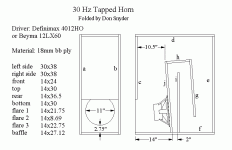Thanks to Don Snyder & Chris.

Split off from this long post,
http://www.diyaudio.com/forums/showthread.php?postid=1819879#post1819879
- 2-sheets of 3/4" 15-ply ApplePly used.
- The blue CAT5 will be used to power some RGB LEDs to illuminate the 1/2" Green-Edge CNC Carving / access panel.
- Coil will be installed later
Here are my current build pictures:
Old Canon 10D, 28-135mm USM-IS, ISO100, F16, 1/80sec.
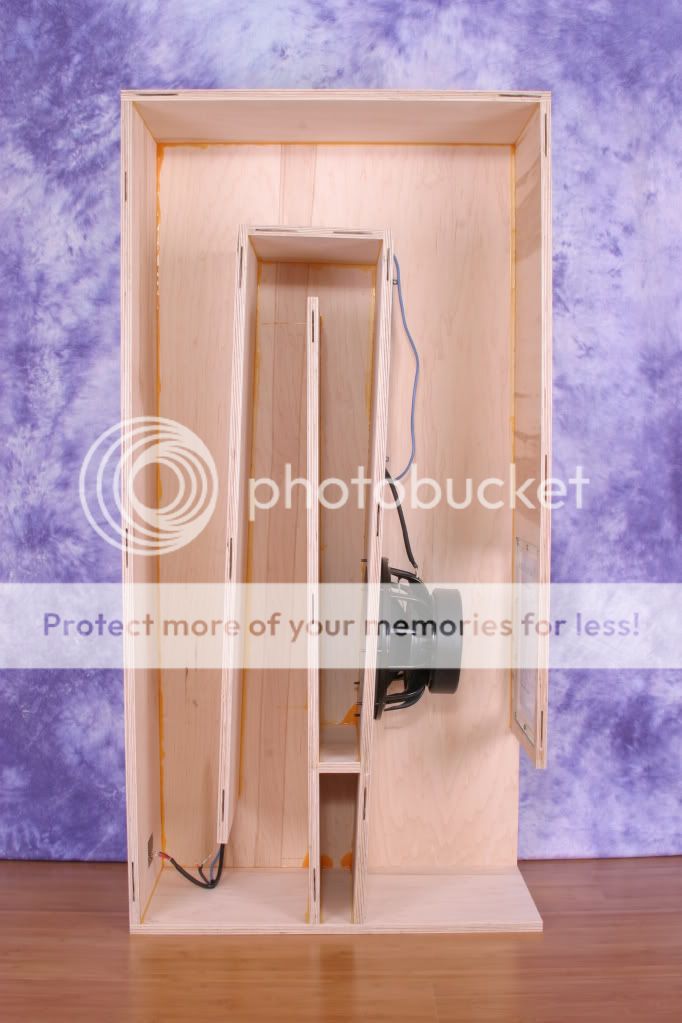
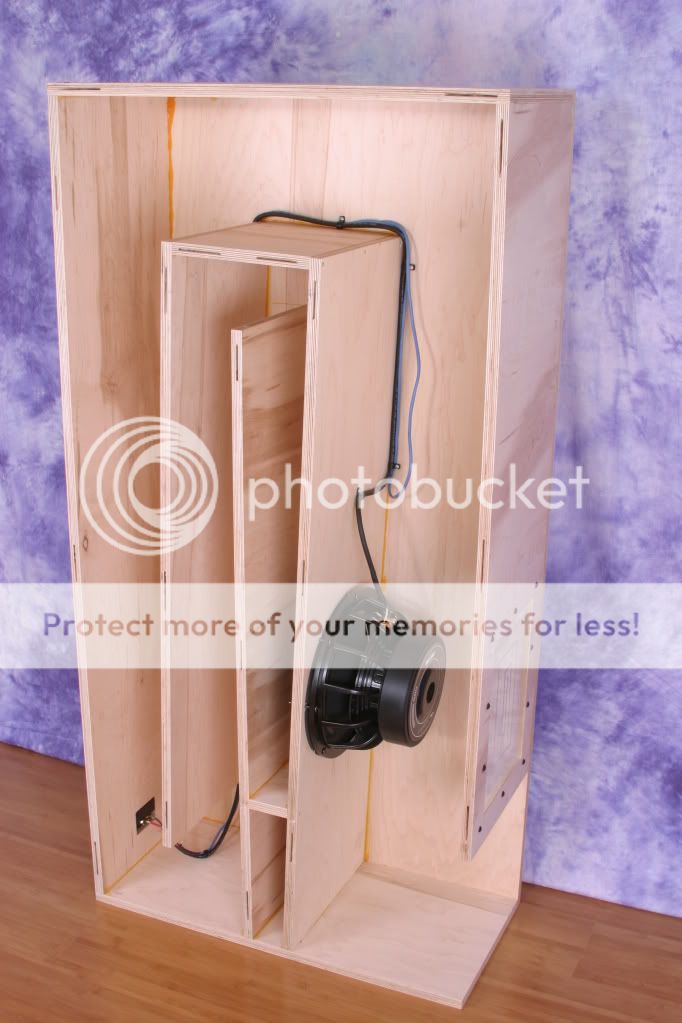
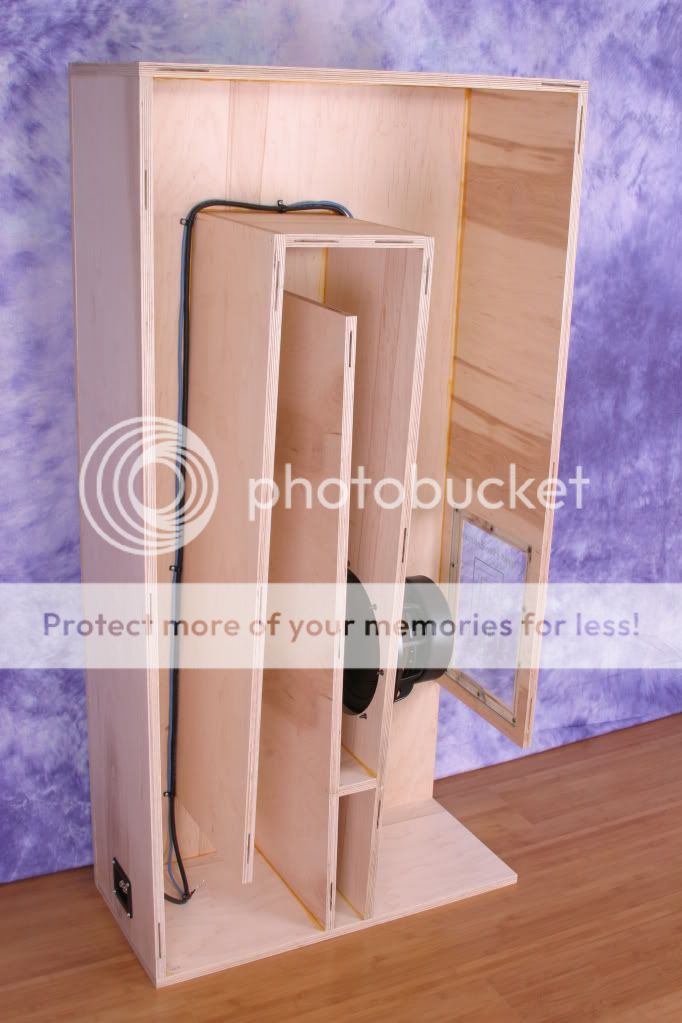
Some CNC V-Bit Carving Action:
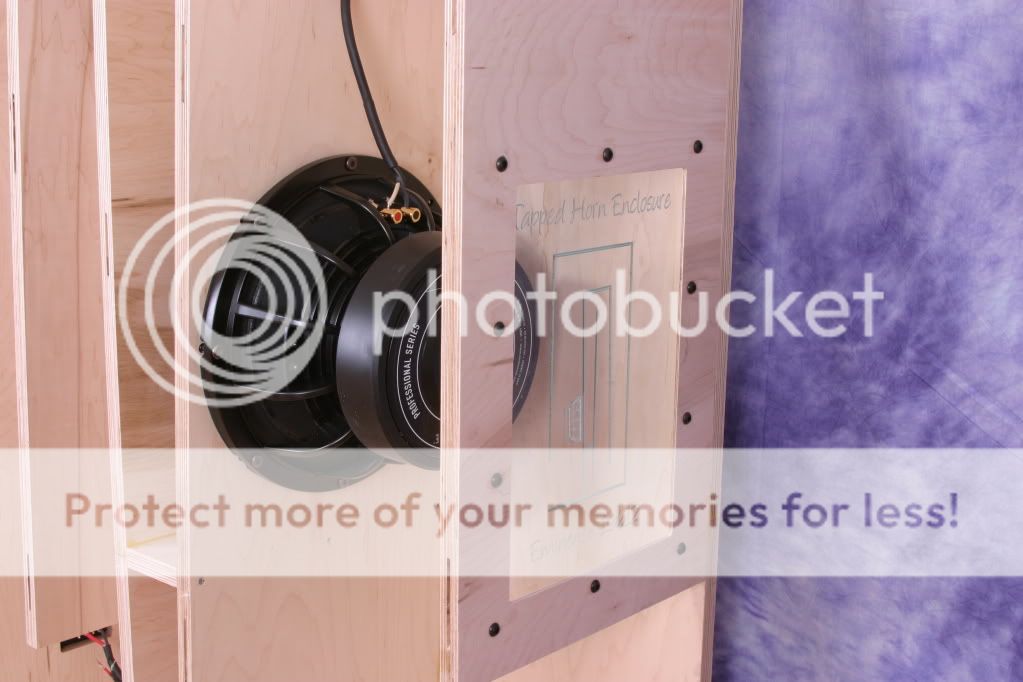
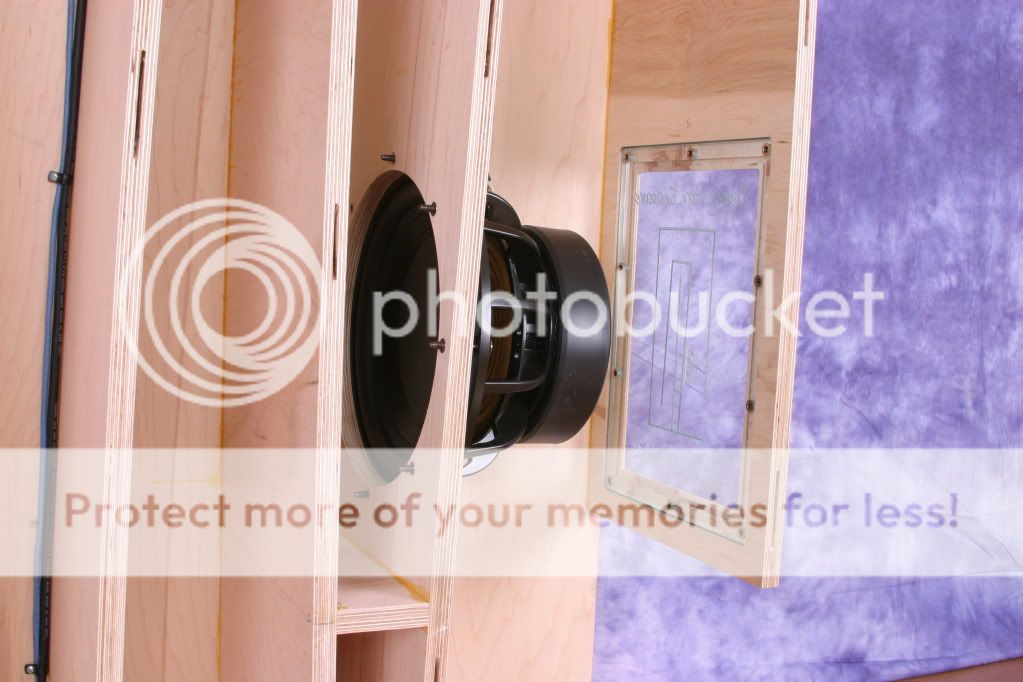
Setup took about an hour
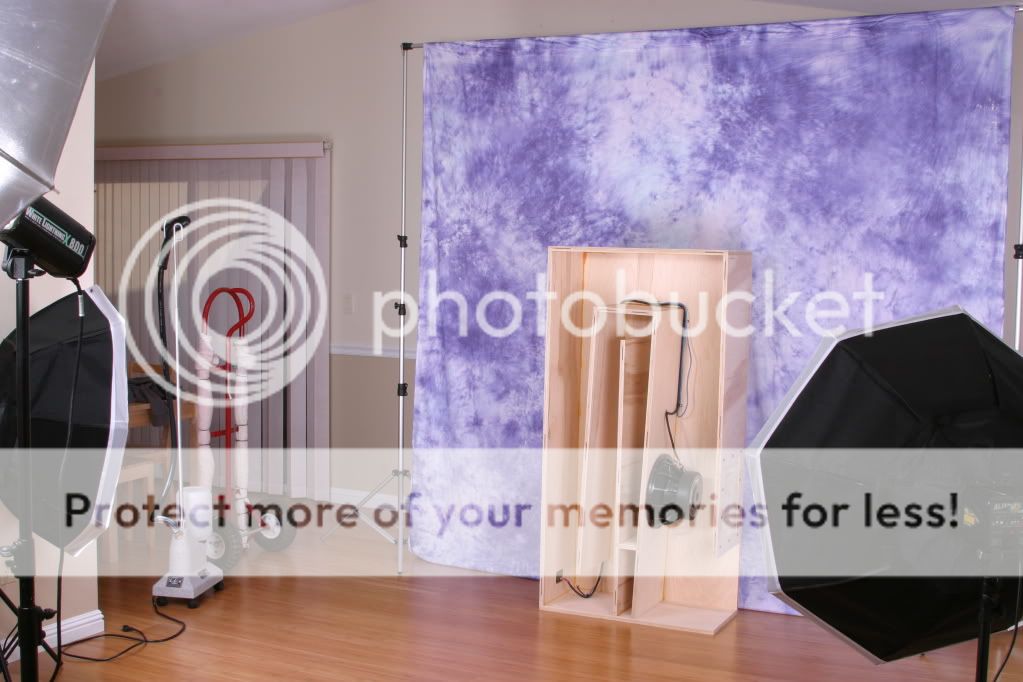
Split off from this long post,
http://www.diyaudio.com/forums/showthread.php?postid=1819879#post1819879
- 2-sheets of 3/4" 15-ply ApplePly used.
- The blue CAT5 will be used to power some RGB LEDs to illuminate the 1/2" Green-Edge CNC Carving / access panel.
- Coil will be installed later
Here are my current build pictures:
Old Canon 10D, 28-135mm USM-IS, ISO100, F16, 1/80sec.



Some CNC V-Bit Carving Action:


Setup took about an hour

Wow, love the pictures and the build quality, very nice!! Although this is build very rugged, you might consider some bracings at large areas, Since I´m in Pro-Sound, I use similar plywood as you do and I´ve always had to add some bracings and it always improved the sound (and made rumble from the enclosure walls less).
Hi layertone,
Nice work! Please, keep us informed as to the placement of damping materials, and other progress.
Also, would you mind sharing name and number of the driver and CNC panel (elegant) mounting hardware?
Regards,
Nice work! Please, keep us informed as to the placement of damping materials, and other progress.
Also, would you mind sharing name and number of the driver and CNC panel (elegant) mounting hardware?
Regards,
Really nice work and great pics! I like that the driver is visible. My tapped horn is very similar in layout to yours and I get slick of putting on the hearing protection and sticking on my head in the mouth with a flashlight to monitor driver excursion.
I added a ton of bracing to mine, here's a pic if you're looking for some inspiration.
http://www.diyaudio.com/forums/attachment.php?s=&postid=1625614&stamp=1223240677
BTW how to you intend to finish it - i.e. paint, stain etc.
I added a ton of bracing to mine, here's a pic if you're looking for some inspiration.
http://www.diyaudio.com/forums/attachment.php?s=&postid=1625614&stamp=1223240677
BTW how to you intend to finish it - i.e. paint, stain etc.
It's great when a plan comes together ...
MaVo did the simulation, Chris8sirhC decided to build the first one, and I did the fold
for Chris. Now, Layertone has built one of the nicest Tapped Horns of this series.
Great job & pics,
Don
MaVo did the simulation, Chris8sirhC decided to build the first one, and I did the fold
for Chris. Now, Layertone has built one of the nicest Tapped Horns of this series.
Great job & pics,
Don
Great construction !
How does it perform compared to regular boxed sub's with the same driver ( sealed box ? ) ?
Horn's are great for high efficiency but how does this implementation compare ?
I'm asking because the chance of me coming across a similar setup is 'very' remote .
Cheers.
How does it perform compared to regular boxed sub's with the same driver ( sealed box ? ) ?
Horn's are great for high efficiency but how does this implementation compare ?
I'm asking because the chance of me coming across a similar setup is 'very' remote .
Cheers.
ashok said:Great construction !
How does it perform compared to regular boxed sub's with the same driver ( sealed box ? ) ?
Horn's are great for high efficiency but how does this implementation compare ?
I'm asking because the chance of me coming across a similar setup is 'very' remote .
Cheers.
Much Louder!
Much Lower!
Much Cleaner!
Impossible to design without computer simulation, and 95% of all drivers are unsuitable.
This one has an F3 of 20Hz, but it can only be used to 70-80 Hz. It requires 4th order HP & X-Over filters
Now, lets turn up the power ...
1. What happens when the port chokes?
2. Doesn't the vented box run out of xmax first?
1. What happens when the port chokes?
2. Doesn't the vented box run out of xmax first?
Thanks for your comments Don.
Jogi59, can you please put up the URL for that picture.
I get a blurb saying " No hotlinking allowed !"
It says " use the first link after the completed upload ". I guess you know what to do .
Maybe this is an opportunity to sort out the differences between the two implementations. I'm sure each has its own merits and demerits. However the conclusions will help in choosing the solution for others who have not made the comparisons themselves.
Cheers.
Jogi59, can you please put up the URL for that picture.
I get a blurb saying " No hotlinking allowed !"
It says " use the first link after the completed upload ". I guess you know what to do .
Maybe this is an opportunity to sort out the differences between the two implementations. I'm sure each has its own merits and demerits. However the conclusions will help in choosing the solution for others who have not made the comparisons themselves.
Cheers.
Don Snyder said:Now, lets turn up the power ...
1. What happens when the port chokes?
2. Doesn't the vented box run out of xmax first?
Ditto
In a 300 liters box is enough space for big enough portsDon Snyder said:1.What happens when the port chokes?
NoDon Snyder said:2. Doesn't the vented box run out of xmax first?
the tapped horn runs out of Xmax first
Visaton in germany measured a tapped horn and a vented box of the same size in their anechoic room. The surprising result was: the vented box went louder
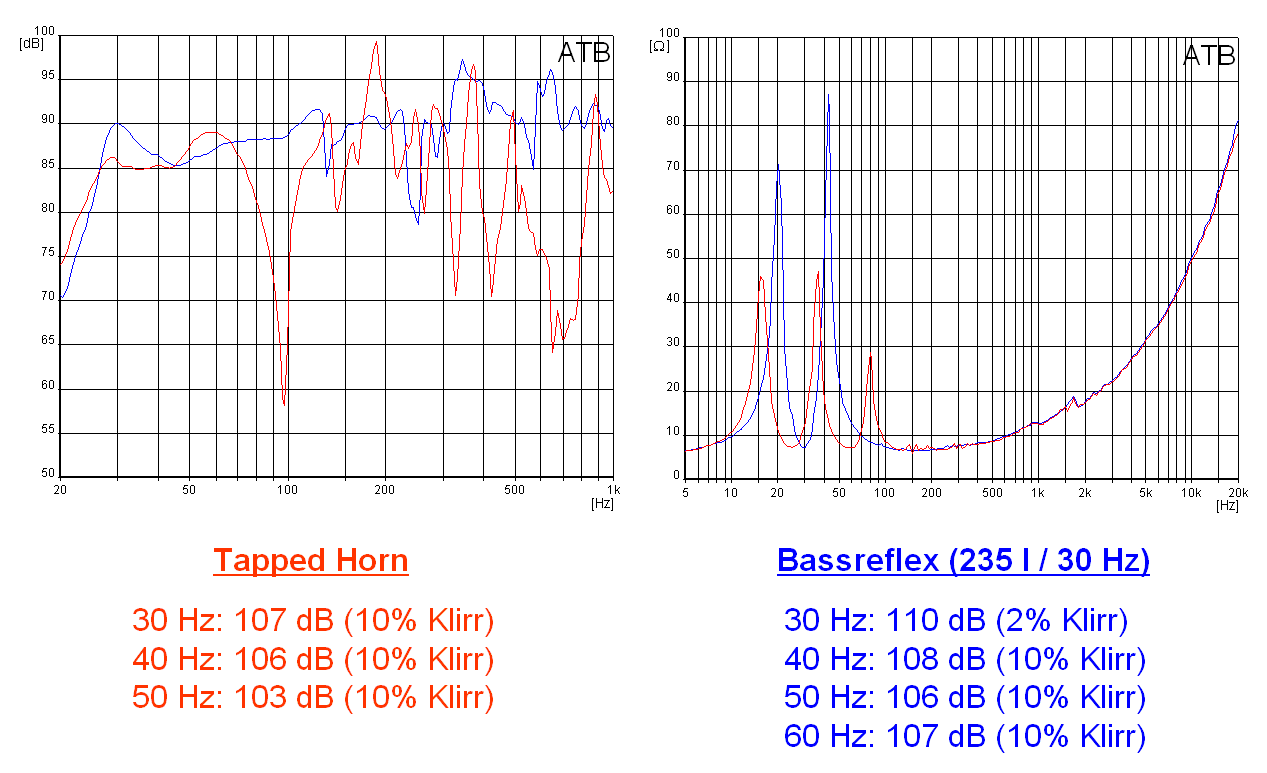
Post #13
Post #13
Hi joqi59:
Very interesting data. That has to be one big anechoic chamber to reach down to 20/30Hz.
Looking at the left hand graph (1W/1m?), I doubt that this is a well designed tapped horn. It would be nice to get more data on the build.
Do you have any more information pertaining to the tests, e.g.: which woofer was used, enclosure's layout, drive power?
Regards,
Post #13
Hi joqi59:
Very interesting data. That has to be one big anechoic chamber to reach down to 20/30Hz.
Looking at the left hand graph (1W/1m?), I doubt that this is a well designed tapped horn. It would be nice to get more data on the build.
Do you have any more information pertaining to the tests, e.g.: which woofer was used, enclosure's layout, drive power?
Regards,
I think a size distinction needs to be made here. If you are willing to live with a 300 L box, then maybe a ported enclosure is fine for some people. However, the main advantage to the tapped horn is its ability to play low, clean, and loud in enclosures smaller than what is needed for a ported box. Regardless the sizes, the tapped horn is more musical because it has a broader tuned bandpass than a ported enclosure. I've never heard a ported enclosure play anything but one note bass. That's what happens when you only have a tuned port to work with.
Re: Post #13
Don´t forget, that the measurement was done in an anechoic chamber=fullspace=4.0xpi in hornresponse.
To compare it with hornresponse simulations, add 12dB (1.0xpi) or 18dB (0.5xpi)
http://www.visaton.de/vb/showthread.php?t=18417
Simulation is in post 28
Enclosure in post 40
Used driver
TIW 300
.tb46 said:Very interesting data. That has to be one big anechoic chamber to reach down to 20/30Hz
An externally hosted image should be here but it was not working when we last tested it.
tb46 said:Looking at the left hand graph (1W/1m?), I doubt that this is a well designed tapped horn. It would be nice to get more data on the build.
Don´t forget, that the measurement was done in an anechoic chamber=fullspace=4.0xpi in hornresponse.
To compare it with hornresponse simulations, add 12dB (1.0xpi) or 18dB (0.5xpi)
The original thread is heretb46 said:Do you have any more information pertaining to the tests, e.g.: which woofer was used, enclosure's layout, drive power?
http://www.visaton.de/vb/showthread.php?t=18417
Simulation is in post 28
Enclosure in post 40
Used driver
TIW 300
Those pictures look very familiar...
I did some corner braces (piece of wood 2''x2''x12'' on each of the inside fold corners. I also filled in that gap with expanding spray foam after it was completed. That space would be perfect though, for putting in a resonator or two, once you had figured out the correct length/tuning/etc.
I am thinking of having mine in a corner firing into the room through an opening in the door, and I would need to put on a small mouth extension to the horn. I am wondering if this would lower the tuning much.
I did some corner braces (piece of wood 2''x2''x12'' on each of the inside fold corners. I also filled in that gap with expanding spray foam after it was completed. That space would be perfect though, for putting in a resonator or two, once you had figured out the correct length/tuning/etc.
I am thinking of having mine in a corner firing into the room through an opening in the door, and I would need to put on a small mouth extension to the horn. I am wondering if this would lower the tuning much.
Post #16
Hi joqi59,
Neat chamber picture. 🙂
As to the 1W/1m curve of the TH: I was talking more about the shape of the curve than about its amplitude.
Thanks a lot for the links and the driver info.
Regards,
Hi joqi59,
Neat chamber picture. 🙂
As to the 1W/1m curve of the TH: I was talking more about the shape of the curve than about its amplitude.
Thanks a lot for the links and the driver info.
Regards,
- Home
- Loudspeakers
- Subwoofers
- Lab12 - Tapped Horn


